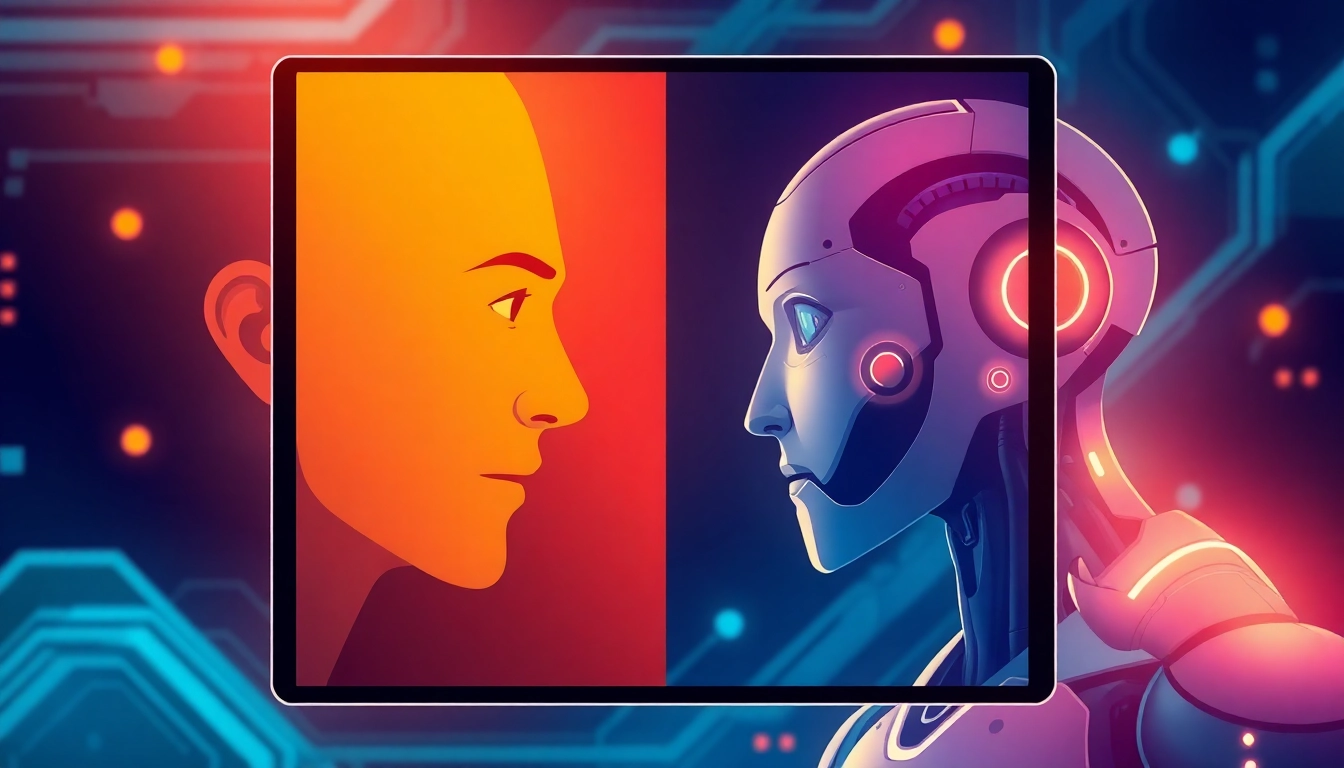Unlocking the Challenge: How to Master the Human or Not AI Game
In an era where artificial intelligence continues to evolve at an unprecedented pace, the ability to discern between human and AI-generated responses has become an intriguing and essential skill. The human or not AI game offers an engaging, interactive platform that puts this skill to the test. This social Turing game not only challenges your perceptiveness but also serves as a window into the complexities of AI communication, prompting players to consider the nuances of conversation and response authenticity. Understanding how to approach this game effectively can elevate your understanding of AI’s capabilities and sharpen your perceptual acuity—skills increasingly vital in today’s digital landscape.
Understanding the Human or Not AI Game Approach
What is the Human or Not AI Challenge?
The core of the human or not challenge is a simple yet profound question: can you tell whether you’re speaking with a human or an artificial intelligence agent? The game typically involves a timed, two-minute conversation with an anonymous participant—be it a human or an AI bot. After the interaction, players are prompted to classify their chat partner as either human or AI. This test tests not just your intuition but also your familiarity with human communication patterns and AI limitations.
How the Conversation Mechanics Work
Participants initiate a real-time chat with an anonymous counterpart. Responses are generated dynamically, leveraging advanced language models—often GPT-4 or similar—making the conversation indistinguishable from human interaction at times. During this period, players observe responses carefully, paying close attention to nuances such as tone, coherence, spontaneity, and contextual understanding. After two minutes, players make their educated guess. The game’s design emphasizes quick judgment, critical listening, and sharp observation, which are crucial in differentiating AI responses from human nuances.
Key Skills Needed to Win
Success in human or not hinges on several key competencies:
- Critical Listening: Paying attention to subtleties such as hesitation, inconsistency, or overly formal responses.
- Pattern Recognition: Recognizing common AI characteristics like repetitive phrasing, lack of emotional depth, or unnatural transitions.
- Contextual Reasoning: Understanding conversational context and identifying responses that lack human intuition or common-sense logic.
- Emotional Intelligence: Detecting emotional cues, humor, or personal references that AI may struggle to handle appropriately.
Strategies to Improve Your Human or Not Judgments
Identifying Subtle Cues in Responses
Mastering the game involves honing your ability to pick up on subtle cues. For example, AI responses might exhibit certain predictable patterns, such as overly formal language or lack of true understanding of humor or sarcasm. Pay attention to:
- Repetition: Repeating phrases or ideas within responses.
- Response Length: AI often maintains a steady, overly balanced length that may lack natural variation.
- Emotional Nuance: Responses failing to reflect genuine emotional depth or empathy.
Common Mistakes and How to Avoid Them
One frequent mistake is relying solely on surface-level cues, like grammar or spelling errors, which AI can bypass through advanced language models. Instead, focus on the depth and spontaneity of responses. Avoid assumptions such as “formal responses are always AI,” as many sophisticated bots simulate casual human speech effectively. Enhance your detection skills by analyzing:
- Inconsistencies: Shifts in tone or topic that seem out of place.
- Lack of Personal Experience: Absence of personalized anecdotes or inconsistent references.
- Time Responses: Unnatural response times—either too quick or too delayed—can be telltale signs.
Practice Tips for Better AI Detection
Consistent practice is vital. Engage regularly with different chatbots and human conversations. Some effective strategies include:
- Engage in wide-ranging topics to observe response adaptability.
- Introduce humor, sarcasm, or emotional subjects to test the counterpart’s reaction.
- Analyze response patterns over time to identify AI characteristics like formulaic replies.
Moreover, reviewing collected conversations and expert analyses can refine your perceptual skills, making you more adept at the game and at identifying AI in broader contexts.
Technical Aspects Behind the Game
AI Technologies Powering Human or Not
The backbone of the human or not game is cutting-edge AI technology. It employs sophisticated language models—such as GPT-4—that are trained on extensive datasets to generate human-like responses. These models incorporate deep neural networks, transformer architectures, and reinforcement learning loops, enabling them to produce contextually relevant, coherent, and often nuanced responses. This technological prowess makes the game increasingly challenging, as AI responses can rival human replies in complexity and subtlety.
Privacy and Safety Measures
Ensuring user safety and privacy is paramount. The platform employs stringent privacy policies, anonymizing all interactions and avoiding data collection of personal information unless explicitly consented to. Conversations are transient and securely stored, with robust encryption protocols. This framework creates a trusted environment for players to enjoy the game without concerns about data privacy or misuse, fostering higher engagement and honest participation.
How the Data Enhances Player Experience
Data collected during gameplay helps developers improve response algorithms, personalize difficulty levels, and refine detection cues. Analyzing player choices and feedback informs AI model updates, ensuring responses become more human-like over time while also identifying common areas where players struggle. This feedback loop optimizes the game’s challenge and educational value, making human or not a continually evolving tool for AI literacy.
Benefits and Opportunities of Playing Human or Not
Sharpen Your Critical Thinking Skills
Engaging with the game enhances your analytical and perceptive skills, fostering sharper critical thinking. As you evaluate responses, you develop a keener understanding of language subtleties, emotional cues, and conversational dynamics—competencies that are invaluable in digital communication, security, and AI literacy.
Contribute to AI Transparency and Ethics
By participating, you contribute to broader discussions on AI transparency and ethical AI deployment. Recognizing AI responses builds awareness about AI’s role in society, encouraging responsible development, deployment, and regulation of intelligent systems.
Join a Growing Community of AI Enthusiasts
The game connects a vibrant community of AI enthusiasts, psychologists, and tech innovators. Sharing insights, challenges, and detection tips fosters collaborative learning and keeps participants updated on AI advancements, ethical debates, and industry trends.
Getting Started and Engaging with Human or Not
Step-by-Step Guide to Play Free
Getting started is straightforward:
- Visit the official human or not website.
- Click on the “Start Game” button—no downloads or sign-ups required.
- Engage in a two-minute chat with an anonymous counterpart.
- After the conversation, evaluate and make your guess.
Mobile Compatibility and Accessibility
The platform is fully responsive, allowing seamless play across desktop, tablet, and smartphones. The interface is optimized for touch and keyboard inputs, ensuring accessibility for diverse users. Such flexibility enables users to play anytime, anywhere—whether commuting, during breaks, or at home—making the game a convenient tool for daily AI awareness training.
Join the Conversation and Share Your Insights
Beyond gameplay, you can participate in community forums, social media discussions, and analysis threads. Sharing your detection strategies, humorous conversations, and AI learnings fosters collective intelligence and enhances your detection skills. Staying engaged with the community also helps you stay updated on new AI developments, game features, and ethical debates around AI communication.









